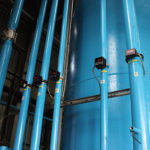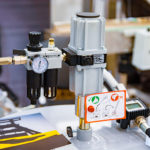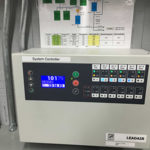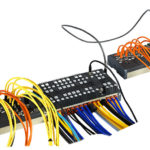An electropneumatic flow controller provides precision control of the flow of a gas to an actuator — representing the latest flow control option. They are most commonly used to control the flow of air to an actuator; thereby controlling the speed which the actuator extends/retracts or rotates. To appreciate the advances that electropneumatic flow valves provide, it is important to understand the mechanical technology they are built upon.

A simple way to control the flow of gas to an actuator is a needle valve. This requires a person to manually turn a knob that gradually slides a needle into an orifice reducing the flow. A limitation of this method is that the air going into and out of the actuator is controlled by the same valve.
The next advancement in flow control was the integration of a check valve into the valve. This allowed for control of the flow into or out of the actuator so the return path can open and pass around the orifice. While both valves provide excellent speed control of actuators, their limitations result from their manual adjustment and one flow point. A common issue in pneumatic systems is that as the actuators wear, the speed is reduced, the seals wear and the flow controls need adjustment.
An electropneumatic flow control provides an automated process for adjusting the flow control, addressing the wear example and helps maintenance of the machine by providing early warning of service or replacement needs on the actuators. They can control the speed of an actuator using a sensor for a feedback loop. For example, in a pneumatic cylinder with a linear position transducer sending the location of the cylinder rod as it extends, the electropneumatic flow valve can provide more air, which allows the cylinder to rapidly extend and then slow down when reaching a point where the cylinder is to generate force.
While this example improves the control and knowledge of the actuators in a pneumatic circuit, proportional flow control valves provide two additional control strategies for designers — compensating for pressure changes coming into the system or for flow variations. This provides a more reliable performance of the circuit or machine.






Leave a Reply